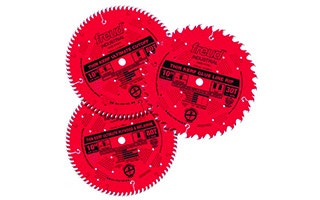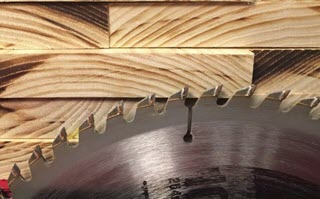Getting Rid of Saw Blade Burns
Have you ever numbed your fingers or unintentionally rounded off a nice, square edge sanding out saw blade burn marks? You're not alone. A woodworker asks our experts: Other than sanding, is there any other way to remove burn marks caused by a table saw blade? I use a Forrest blade and still get burn marks on oak. Here's how three accomplished woodworkers responded.
Answer from Michael Dresdner: "The best defense is a good offense. Do what it takes to avoid burning by setting up your saw correctly, keeping your blades sharp, feeding the wood at the proper speed, and using a good splitter. Wood burns when it is fed too slowly, goes past a dull blade, grabs the back of a blade when it moves while being cut (as with case hardened or reaction wood), or rubs against a "heeling" blade that is not perfectly parallel to the fence. "If burns do show up, you can remove them with a hand plane or a sharp scraper in addition to sandpaper on a sanding block."
Answer from Lee Grindinger: "Sure there is, a scraper or plane will make quick work of the burn marks. However, you should not be getting them. If your blade is sharp and dead-on parallel with your fence and if your feed rate is adequate you should not get burn marks. Another possible cause would be that your saw is underpowered for the work you're doing ... you know what that means. If the wood is bowing as you rip it and binding against the blade it would indicate poorly dried lumber. This binding happens occasionally but should not occur with every rip. Check these things, it's far easier to eliminate the cause of the burning than it is to deal with it after the fact."
Answer from Rob Johnstone: "There is, and it is a bit magical … at least that's how I felt when I first used a properly sharpened scraper. Scrapers look for all the world like a flat piece of metal. (They can be rectangular or have various curved forms, but start with the rectangle.) If you look closely at a scraper you will be able to see (if you are younger than forty … if you are older, get a magnifying glass) that the edges have been burnished with a slight hook, almost as if the steel had been mushroomed out. This hook actually cuts wood fiber (as opposed to scraping or abrading it, as the tool's name implies) if it is properly sharpened and used with a proper technique. It takes a very small, but consistent amount, of wood per cut. Scrapers are better for removing burn marks from wood because they cut through rather than ride over hardened wood grain (such as a burn mark)."

We agree that the best way to deal with burn marks is to not create them in the first place. If you're getting blade burns consistently, start by giving your saw a tune up to make sure it's properly aligned. After that, if you still have a blade burn problem, it might be time to take a look at the kind of blade you are using, and its condition. A dull blade, or one that's not designed for the type of cutting you're doing could be the root of the problem. It's important to have the right saw blade for the job.
Rockler offers a number of wood planes and scrapers, any of which would make an excellent addition to your tool collection. But, we hope you never have to use them to get rid of saw blade burns.
Keep the inspiration coming!
Subscribe to our newsletter for more woodworking tips and tricks





